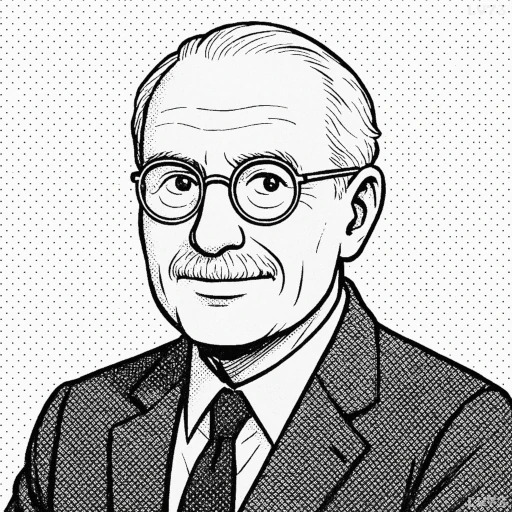“The pendulum of the mind alternates between sense and nonsense, not between right and wrong.”

- July 26, 1875 – June 6, 1961
- Born in Switzerland
- Psychiatrist and psychologist
table of contents
Quote
“The pendulum of the mind alternates between sense and nonsense, not between right and wrong.”
Explanation
In this quote, Carl Jung suggests that the mind does not simply swing between right and wrong but rather oscillates between sense and nonsense—a more fluid and less binary view of human thought. Sense represents logical, coherent thinking, while nonsense refers to irrationality, absurdity, or thoughts that do not fit within conventional frameworks of reason. Jung points out that our mental processes are often shaped by opposing forces: the logical, structured side of the mind and the irrational, unconscious, and creative aspects. These forces are not always clear-cut or opposites of right and wrong; they are part of the complex fabric of the psyche. Instead of making strict moral judgments, the mind often vacillates between rational order and the chaotic or fantastical, which are essential components of our mental life.
Historically, this quote ties into Jung’s exploration of the conscious and unconscious mind. He believed that human consciousness is often caught in a tension between the logical, ego-driven aspects of the psyche and the irrational, unconscious forces—such as dreams, fantasies, and instincts—that can seem nonsensical or disconnected from reality. Jung saw this tension as an inherent part of the individuation process, where a person integrates these conflicting aspects of the psyche. The unconscious mind, with its archetypal symbols and irrational impulses, plays a key role in creativity, problem-solving, and the development of a more whole self. In this context, nonsense might be seen as the raw material from which creativity and deeper insights emerge. Thus, the pendulum of the mind swings between these opposing forces, not merely between right and wrong, but between different kinds of knowledge, understanding, and expression.
In modern psychological and cognitive terms, Jung’s observation is relevant to how we understand cognitive flexibility and the importance of integrating both rational thought and imaginative or creative thinking. The mind’s ability to entertain both logical and illogical ideas without rigidly separating them allows for greater problem-solving and innovation. For instance, in creative thinking or artistic expression, it is often necessary to move beyond the constraints of rationality and engage with nonsense, paradox, or chaos to generate new ideas. Similarly, cognitive flexibility is a key skill in mental health, where individuals learn to move between different modes of thinking—rational problem-solving and intuitive, emotional processing—in response to life’s challenges. Jung’s quote reminds us that both order and chaos play vital roles in the psyche, and a healthy mind needs to be able to navigate between these two states, neither of which is inherently good or bad.
Would you like to share your impressions or related stories about this quote in the comments section?
